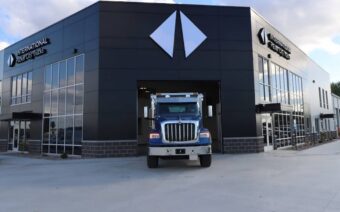
July 14, 2025
At the halfway point of 2025, small- to medium-sized businesses (SMBs) are facing a challenging and dynamic business landscape.
Growth remains a top priority – but achieving it can feel like an uphill battle.
Many leaders are driven, ambitious and visionary, yet they find themselves stuck in the day-to-day, unable to carve out the time and headspace needed to steer their organizations toward sustainable success.
In a recent Stop the Vanilla survey, SMB leaders identified the top three pain points related to growth:
- Lack of accountability and productivity
- Getting bogged down in day-to-day operations
- People-related issues/communication
Though each of these can derail growth, it’s often the second one – being stuck in the day-to-day – that feels most draining and demoralizing.
Leaders know where they want to take their companies, and they have the vision and the drive, but instead of leading forward, they find themselves constantly reacting, managing tasks and patching problems.
Sound familiar?
You’re not alone.
Ask any SMB leader how they spend their time, and chances are they’ll share a familiar story: too much of it is spent managing operations and putting out fires, and not enough is spent on driving the business forward.
The result?
Leaders become the bottleneck.
Strategic priorities are delayed.
Opportunities are missed.
And despite best intentions, the organization remains reactive rather than proactive.
Working in the business – solving immediate problems, ensuring daily operations run smoothly – is essential.
But it’s not what drives sustainable growth.
True growth comes from working on the business: setting the vision, crafting the strategy, building accountability and ensuring your team is set up to execute at the highest level.
Here’s why this matters – research shows:
- 70% of business failures are caused by poor strategic planning, lack of delegation and too much time spent on daily operations.
- Businesses that prioritize strategy grow 30% faster than those that don’t.
- Long-term focused companies are 33% more likely to become high performers.
- Businesses with a growth mindset achieve two to three times higher valuations than those stuck in survival mode.
When you’re consumed by the day-to-day, you’re not just slowing down progress – you’re setting a ceiling on your company’s potential.
The balance
So, how do high-performing SMB leaders balance working on and in the business?
Ideally, the time allocation for a small- to medium-sized business working “In” the business versus “On” the business should look something like this:
- CEO/president: 70% On, 30% In
- VP-level leaders: 50% On, 50% In
- Managers: 30% On, 70% In
- Frontline team members: 10% On, 90% In
In practice, however, many leaders find themselves spending as much as 68% of their time in the business – putting out fires, managing crises and juggling tasks that could be delegated or solved by others.
That imbalance doesn’t just slow you down – it prevents your business from scaling.
Imagine what could happen if you flipped the script.
Imagine carving out 10 more hours a week to focus on growth, innovation or customer experience.
Imagine having a team that takes ownership of outcomes, solves problems before they hit your desk and stays aligned on goals without constant supervision.
It’s not just a dream – it’s a choice.
It’s easy to feel like the weight of the business rests entirely on your shoulders.
But sustainable growth isn’t about being the hero every day – it’s about building a business that works, even when you’re not in the room.
Getting there
To get there, SMB leaders should focus on these core areas:
Clear strategy and vision
A well-defined strategic plan answers two questions: Where are we going, and how will we get there?
It’s not enough to have a vision in your head – it needs to be documented, shared and communicated clearly to your entire team.
When everyone knows the destination, that becomes the filter for all decisions.
Track working ‘in’ versus working ‘on’ the business
Working “In” the business is completing your daily work/tasks.
Working “On” the business is completing action plans to achieve your company goals that move the company toward your vision.
A good way to do this is tracking them as ActIn versus ActOn plans.
Through this approach, you can calculate the percentage that each team member is working In versus On the business.
Everyone in a small- to medium-sized business works In the business at times during the week.
But the more team members businesses have working On the business, the faster that company will grow.
Systems that support growth
Systems are essential to getting unstuck from the day-to-day.
Leaders who thrive, invest in processes that keep the business running smoothly – without them being the bottleneck.
Whether it’s a dashboard, plan execution review meeting, goal setting, software to track progress or communication systems that keep everyone aligned – these tools can free up your time to focus on what matters most: driving growth.
If you’re tired of feeling stuck, if you’re tired of being the one who has to push every project forward – there’s good news: you don’t have to do it alone.
By making the shift from working In the business to working On it, you’re not just creating more time for yourself – you’re building a business that’s stronger, more resilient and ready for the future.
Let this be the time you step back from the day-to-day and lead your business with strategic clarity, accountability and confidence.
By investing in your vision, empowering your team and building the right systems, you’ll create the space you need to scale – and unlock the full potential of your business.
 Connecting newcomers to the community, one link at a time
Connecting newcomers to the community, one link at a time Day’s Bowl-A-Dome rolls into a new era
Day’s Bowl-A-Dome rolls into a new era








